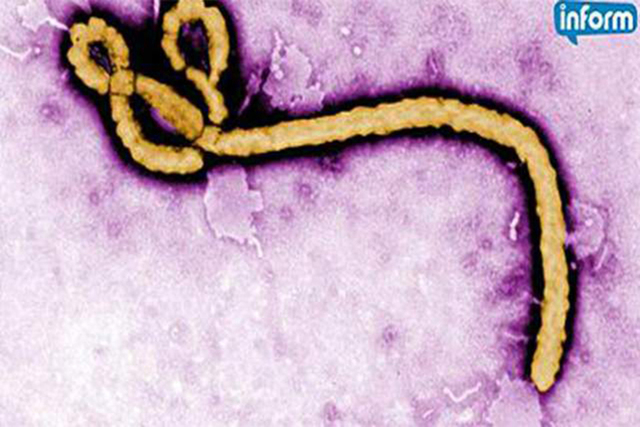Health official won’t ID valley hospitals designated to treat Ebola
Public health officials in Southern Nevada have designated hospitals where emergency medical teams should take patients fitting the Ebola profile, but the region’s chief medical officer won’t say where those facilities are.
The state Ebola Advisory Task Force meets at 10 a.m. today on the campus of Rawson-Neal Psychiatric Hospital as public health officials, emergency responders and medical providers continue to refine details related to patient transportation, hospital procedures and lab readiness in the unlikely event a patient with the virus is discovered in Nevada.
Dr. Joseph Iser, chief medical officer for the Southern Nevada Health District, told his board last week that for security and safety reasons, the hospitals designated to receive Ebola patients won’t be made public. Iser added Tuesday that he wants to prevent the chance that people might go to an Ebola designated hospital, worried they are sicker than they really are.
Iser, a member of the state task force, stressed that all hospitals in Southern Nevada are prepared for Ebola or any other infectious disease. Front-line health care workers continue to question incoming patients about travel to the countries affected in the current Ebola epidemic: Sierra Leone, Guinea and Liberia. Iser added that naming the Ebola designated hospitals might lead to complacency at the other facilities.
“Every single one of our hospitals has to be prepared, and I can’t take the chance that releasing those names might be a reason that someone might not be as prepared as possible,” Iser said.
Some members of the health district board are divided on whether the public should know which hospitals were designated to receive Ebola patients. County Commissioner Chris Giunchigliani and Dr. Frank Nemec, a Las Vegas gastroenterologist, said after last week’s meeting they felt the hospitals should be named. Dr. Kenneth Osgood, a Las Vegas pediatrician, said he agreed with Iser’s decision not to identify the facilities.
Nemec added, however, that he supported Iser’s decision not to reveal which hospitals were designated to receive Ebola patients despite his feelings that the public would benefit by having that information.
Protocols for responding to a potential Ebola patient are evolving constantly, and the U.S. health care system is more prepared today that it was even last week, Iser said. Travelers returning from one of the affected countries are being monitored for Ebola symptoms: severe headache, muscle pain, vomiting, diarrhea, stomach pain or unexplained bleeding or bruising.
Also, those travelers are taking their own temperature every morning and evening to monitor for fever, Iser said, one of the earliest signs of Ebola exposure. During screening upon re-entry to the United States, those travelers are given a kit that includes a touchless thermometer.
Iser said he opposes quarantine for travelers returning from those West African countries. The U.S. Centers for Disease Control and Prevention has developed a series of protocols for travelers based on the level of risk they pose to the public.
Those in the high-risk group are required to stay home and remain in touch with health officials who might visit unannounced. The people considered at risk are being asked to avoid public transportation, large gatherings and long-distance travel. Travelers who had no direct contact with Ebola patients overseas are considered low risk, and they, too, are required to keep in contact with health officials.
Public health officials in Nevada will be notified when a traveler from one of those countries ultimately arrives in Southern Nevada.
“The vast majority of those people are at lower risk,” he said.
Dr. Dale Carrison, University Medical Center chief of staff and also a member of the state Ebola task force, called a 21-day isolation period for anyone returning from those countries a matter of “common courtesy” shown to the public.
Such travelers would be doing themselves a favor by exercising an abundance of caution in case they did develop symptoms, Carrison said. Returning travelers who took 21 days to monitor their health status would be in a better position to endure being infected with Ebola than people who returned to their hectic routines.
“If you think you’ve been exposed, what’s the harm in being cautious and taking care of yourself?” Carrison asked.
Another subject that probably will receive attention by the task force is the issue of personal protective equipment for health care workers. Carrison said the recommended procedures for using gowns, masks, gloves and face shields have been refined to reduce the risk to health care workers.
The important part of the process, Carrison said, is removal and disposal of the equipment after doctors, nurses and support staff have left the room of an infected patient. Medical staff must work in teams with someone watching that the proper steps are followed and no breach of the protective coverings occurs.
Hospitals continue to review CDC recommendations with staff, including isolation of patients from contact with unprotected people, the use of protective clothing, gloves, masks, impermeable gowns and goggles in caring for Ebola patients and other infection-control measures such as equipment sterilization and use of disinfectants, said Brendon Bussmann, spokesman for Sunrise Health, which includes Sunrise, MountainView and Southern Hills hospitals.
Contact Steven Moore at 702-380-4563 or smoore@reviewjournal.com.
RELATED
Nevada congressional hopeful blames Republicans for Ebola


















